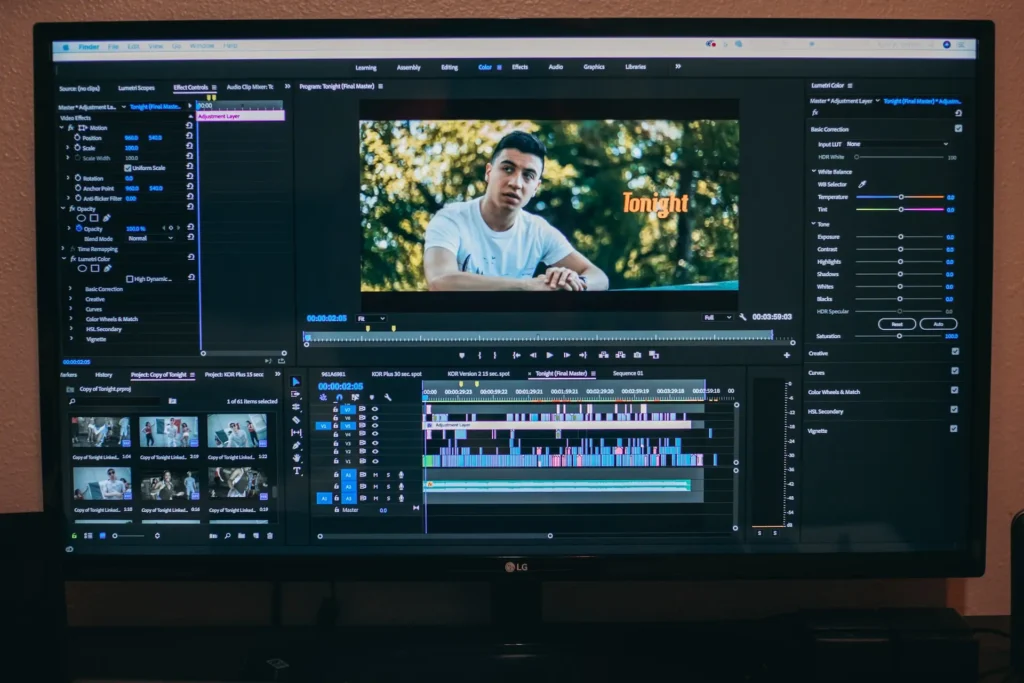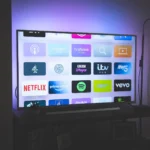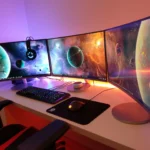
What is the best monitor for people who want to edit photos?
Photo editing is not just about your viewing comfort and satisfaction. You need a proper rendition of the detail to make sure that what you see online matches up with how things look when they’re done being taken care of by someone else! That means getting yourself some monitors worthy enough for all those precious memories that await inside Don’t worry: there will always be an option available if this isn’t something right off-the-shelf at home today.
When you’re editing photos, it’s essential that you have a Photo Editing Monitor that can give you an accurate rendition of the image. With so many different monitors on the market, it can be challenging to know which Photo Editing Monitor is right for you. In this article, we’ll look at some of the best monitors for photo editing in 2024 and discuss what makes them stand out from the competition. We’ll also provide tips on choosing the right Photo Editing Monitor for your needs.
Our Top Picks of The Best Monitor for Photo Editing in 2024
1. NEC 4K UHD Photo Editing Monitor

The NEC EA271U-BK is a 27.4″ 4K UHD business-class widescreen desktop monitor that uses an IPS panel for excellent image reproduction with wide viewing angles. It has full connectivity, including DisplayPort, two HDMI inputs, and USB Type-C.
This 27.4″ 4K UHD monitor from NEC is perfect for business users who need a high-quality display with a USB Type-C input that delivers 60W of power and video and USB over one cable. The touch-sensitive OSD controls are integrated into the bezel, making Display adjustments more accessible than ever.
The NEC EA271U-BK 27.4″ 4K UHD Business-Class Widescreen Desktop Monitor is a business-class widescreen monitor with an integrated power supply and an ergonomic stand that provides the ultimate viewing experience. The combination of high resolution, high contrast, and wide viewing angles eliminates the need for multiple monitors to achieve a perfect view.
And when you’re not at your desk, this NEC display can be tilted down to 60 degrees, so it’s easy to share content with coworkers or friends while you’re on the go. The 27.4″ 4K UHD display also offers full connectivity, including DisplayPort, two HDMI inputs, and USB Type-C. Plus, the touch-sensitive OSD controls are integrated into the bezel, making Display adjustments more accessible than ever.
Specifications:
- Screen Size: 27.4 Inches
- Display Resolution Maximum: 3840 x 2160 Pixels
- Brand: NEC
- Refresh Rate: 60 Hz
- Connectivity Technology: USB, DisplayPort, HDMI
Related: Best Gaming Monitor Under $400
2. Dell Ultrasharp WQHD Photo Editing Monitor

The Dell Ultrasharp U2719DX monitor is a high-performance display designed for users who need to be productive across multiple screens, with virtually seamless multi-tasking capabilities and maximum screen real estate. This 27″ WQHD (2560 x 1440) resolution monitor with IPS technology has a wide viewing angle of 178° horizontal and vertical, so you can see what’s on the screen from almost any angle. It also has an ergonomic stand that offers tilt, pivot, and height adjustment to work in your comfort zone. With built-in cables to connect to your PC, this monitor is also ideal for a dual-monitor or multiple-monitor setup.
Dell Ultrasharp U2719DX 27-inch WQHD 2560×1440 Resolution IPS monitor has an IPS panel, which delivers more consistent color and wider viewing angles than standard TN panels. It also features a USB Type-C port that supports DisplayPort 1.2 signals and can be used with the included cable to connect to your PC or laptop without needing adapters. The U2719DX offers 1920 x 1440 resolution at 60 hertz, dual 9-watt speakers, and easy connectivity options like DisplayPort, HDMI, and USB 3.0.
Specifications:
- Screen Size: 27 Inches
- Display Resolution Maximum: QHD wide 3440 x 1440 Pixels
- Brand: Dell
- Special Features: Height Adjustment, Hardware Calibration, Pivot Adjustment, Swivel Adjustment, Wall Mountable, Tilt Adjustment, Flicker-FreeHeight Adjustment, Hardware Calibration, Pivot Adjustment, Swivel Adjustment, Wall Mountable, Tilt Adjustment, Flicker
- Refresh Rate: 60 Hz
3. BenQ 4K UHD Photo Editing Monitor

The BenQ PD3200U 32-inch 4K UHD IPS professional factory-calibrated computer monitor is the perfect choice for accurate colors and seamless connectivity. With its HDMI, DisplayPort, mDP, and USB hub ports, this monitor makes it easy to access content and expand your workspace. It also features a built-in KVM switch and HotKey Puck G2 for even more convenience. Plus, with CalMan-verified and Pantone-validated technology, you can be sure that the colors on this monitor are always accurate.
BenQ’s PD3200U monitor is designed for ergonomic comfort and productivity. This 4K UHD monitor can be customized to fit your specific needs with a wide range of adjustments. Eye-care technology reduces eye fatigue, making it easier to work for extended periods.
BenQ’s PD3200U monitor is perfect for creative professionals who need accurate color reproduction. Featuring AQCOLOR technology, this monitor reproduces colors with stunning accuracy, making it great for photo and video editing. The built-in speakers deliver premium audio, freeing up desk space.
Specifications:
- Screen Size: 32 Inches
- Display Resolution Maximum: 3840×2160 Pixels
- Brand: BenQ
- Refresh Rate: 60 Hz
- Aspect Ratio: 16:9
Related: Best Gaming PC Under 1000
4. ASUS ProArt Display 4K HDR Photo Editing Monitor

The ASUS ProArt PA279Q is a 27-inch 4K UHD (3840 x 2160) professional monitor that delivers lifelike images with a wide color gamut covering 100% sRGB and Rec. 709 standards and a 16:9 aspect ratio. It features an IPS panel with wide 178° viewing angles for minimal color shift even when viewed from extreme positions. The LED backlight offers 350cd/m² of brightness for rich colors and dark details, while the display’s 10-bit color support provides smooth gradations between shades.
ASUS ProArt PA27AC is a Calman Verified professional display featuring a 27” 4K UHD IPS panel with 10-bit color and a comprehensive 100% sRGB gamut. The PA27AC features ASUS ProArt calibration technology that ensures Delta E < 2 color accuracy, while the 178° wide viewing angle panel provides an immersive visual experience. It also has extensive connectivity options, including DisplayPort over USB-C with power delivery for charging laptops or other devices, DisplayPort, HDMI, and a USB 3.1 hub to connect multiple peripherals in one place.
The ASUS ProArt Display PA279CV 27” 4K HDR UHD (3840 x 2160) Monitor is perfect for creative professionals who need a reliable monitor with Adaptive-Sync technology (40~60Hz) to animate content with fast action and eliminate screen tearing. The ASUS-exclusive ProArt Preset and ProArt Palette provide numerous adjustable color parameters to get the perfect color output for your creative work.
Specifications:
- Screen Size: 27 Inches
- Display Resolution Maximum: 3840 x 2160 Pixels
- Brand: ASUS
- Special Features: USB Hub, High Dynamic Range, Adaptive Sync, Tilt Adjustment, Height Adjustment, Swivel Adjustment, Pivot Adjustment, Flicker Free, Blue Light FilterUSB Hub, High Dynamic Range, Adaptive Sync, Tilt Adjustment, Height Adjustment, Swivel Adjustment, Pivot Adjustment, Fl
- Refresh Rate: 60 Hz
5. LG UHD Class Computer Monitor

The LG 27UL500-W 27″ Class Computer Monitor offers a stunning 4K Ultra HD 3840×2160 resolution for incredible detail and IPS technology for outstanding color accuracy. The monitor’s wide viewing angle lets you see the screen clearly from almost any position. With built-in 10w stereo speakers, this monitor is perfect for your home or office computer setup.
The LG 27UL500-W 27″ Class Computer Monitor features a 2560 x 1440 resolution IPS panel display with wide viewing angles and vivid colors. The monitor’s AMD FreeSync technology helps to eliminate screen tearing, stuttering, and input lag for smooth gameplay. It also has built-in speakers and an HDMI port for connecting to your computer or other devices. Additionally, it has several video inputs, such as DisplayPort 1.2, two HDMI ports, and one DVI port for additional connectivity options. The monitor has a VGA cable and a power cord to get you started.
LG’s 27UL500-W 27-inch class computer monitor is perfect for gaming with customized game modes that optimize your gaming conditions. You can easily adjust the screen to whatever you’re playing with two FPS modes and an RTS mode. On-screen control also allows you to make all your screen adjustments with just a few clicks of your mouse.
Specifications:
- Screen Size: 27 Inches
- Display Resolution Maximum: 3840 x 2160 Pixels
- Brand: LG
- Special Features: Anti Glare Screen, Flicker free, Wall Mountable, Tilt Adjustment, High Dynamic Range
- Refresh Rate: 60 Hz
6. Apple Pro Display XDR with Retina 6K Monitor

The new Pro Display XDR with Retina 6K resolution is the perfect monitor for professional use. It features a 32-inch LCD with an impressive 6016 by 3384 pixels resolution, making it ideal for video editing, color grading, and other high-end tasks. The Pro Stand and VESA Mount Adapter are sold separately, so you can choose the configuration that best suits your needs. The Pro Display XDR is also a professional tone of voice professional, providing you with all the information you need to get the most out of your work.
The Apple 32-inch Pro XDR with Retina 6K Display monitor is a professional-grade monitor that delivers extreme dynamic range (XDR) for the most brilliant, true-to-life images. With a brightness of 1000 nits sustained and 1600 nits peak, this monitor is perfect for HDR workflows. The tone of voice is informational, providing users with all the information they need about the product.
The Apple 32-inch Pro XDR with Retina 6K Display monitor is a professional display designed for the most demanding applications. The display’s ultra-high resolution of 5120 x 2880 pixels provides stunning detail and clarity across a wide color gamut, 10-bit color depth, and a 1,000,000:1 contrast ratio. The superwide viewing angle lets you see more onscreen without distortion or color shift. You can view your work from virtually any position without losing quality.
Specifications:
- Screen Size: 32 Inches
- Display Resolution Maximum: 6016 by 3384 Pixels
- Brand: Apple
- Special Features: Height Adjustment, Adaptive Sync, Ultrawide Screen, USB Hub
- Refresh Rate: 60
What to Look for in Monitors for Photo Editing?
Photo editing is a big part of photography and should be done using quality equipment. When choosing the best monitor for photo editing in 2024, keep in mind that there are many different factors to consider, including size as well as brightness levels, with each pixel type having its own distinct color space, which can affect how colors look on-screen (sRGB vs. Adobe RGB). Make sure you know what kind of output profile will work best before making any purchases, so it’s easier than ever before. Let’s discuss some of the most critical factors.
Resolution:
Resolution is essential for photo and video editing. It determines how many pixels make up each frame, so it’s possible to have more content fit on your screen without any loss in detail when zooming out far enough that you can see everything happening around them—especially if they’re high-resolution monitors like Full HD (1920×1080). You should aim at least for something with 1920 x 1080 resolution; 4K IPS panels are affordable too!
Size:
As a rule, the bigger your monitor is, the better. You want to see all those gorgeous photos in their full glory and with as much detail as possible! For some people, this can also help improve their eyesight, so ensure you get at least 23 inches, if not 24+ inch screens, on any device (including TVs).
Black Levels:
IPS screens will never reach the same black levels as OLED. There are differences between an IPS panel and one with similar characteristics, but they’re not exactly alike in their darkroom performance because there’s no standardized measurement for this quality factor; you’ll have to look at review sites like Ratings or YouTube, where viewers share feedback on how well different models handle visible contours across frames (the absence of light).
Brightness:
IPS panels offer great viewing angles and accurate color, even when viewed from off-center positions. If you need extra light or want to see what your content looks like on the screen at night with little ambient interference, then an IPS panel could be just right for you!
Most people don’t have complete darkness during editing sessions. Hence, it’s essential they can still enjoy their screens without any significant issues, such as brightness being too bright for those circumstances – this isn’t much trouble, though, because most modern LCDs are very resilient models that handle intense lighting well (especially ones equipped by VA technology).
Color Space:
This may be the most important thing to get right when it comes down to your screen. Your monitor should cover at least 90% of sRGB and 70% of Adobe RGB spectrum for everything from web browsing, gaming, or photo editing, not to look too off-color sometimes!
Rotatabiliity:
Monitors now offer the option of rotating by 90 degrees. This can be beneficial if you often edit portraits, as it allows for easier viewing when working with multiple people in front or behind camera shots!
Response Time:
Photo/Movie Editor—Quick response time isn’t crucial for photo editing. However, if you’re also working on videos, then keep an eye out for it, as this can slow down the process and may cause errors in your video footage! Aim to go below 10ms (or millionths of a second).
Viewing Angles:
Viewing angles is essential for many reasons, including allowing your monitors to be used in more than one position. It’s also good if the screen has an IPS panel or other type of high-quality glass, providing expansive views without distortion when seen from different angles!
Calibration Setting:
If you’re looking for a cheap monitor to use as your primary photo editing tool, make sure it has the option of being calibrated. On most midrange and professional displays, an auto service menu allows 8-bit calibration from RGB (0 0) -(255 255). Alternatively, some will offer colors at levels ranging from 1 through 100, which should suffice in most cases too!
Frequently Asked Questions
Q: What Size Monitor Is Best For Photo Editing?
It depends on the person’s preferences and needs. Some people prefer a smaller monitor so they can move their arms more easily, while others prefer a larger one for more screen real estate.
As far as specs go, it’s generally recommended to have at least a 1920×1080 resolution for photo editing and a minimum of 24 inches. Larger monitors (27 or 30 inches) are becoming increasingly popular and provide plenty of room to work on multiple images simultaneously.
Q: Why is color accuracy important in Monitors?
A monitor with good color accuracy will display colors that closely match the colors displayed on the computer. This is important because it ensures that what you see on your monitor accurately represents the image or document you are viewing.
It is essential for graphic designers, web developers, and photographers who need to be able to accurately view the colors of the images they are working on. In addition, people who do a lot of color printing will also appreciate a monitor with good color accuracy.
Q: Why do Monitor Dimensions Matter?
Monitors with a higher pixel density make for crisper images and more accurate color reproduction because the pixels are packed in more tightly. This is why high-end monitors have a higher resolution than lower-end monitors.
For graphics professionals, it’s important to use a monitor with as high of a pixel density as possible to avoid any distortion in the image. Photographers and videographers also appreciate the benefits of a high-resolution monitor when it comes to seeing every detail in their work.
Q: Is The Aspect Ratio Of A Monitor Important?
The aspect ratio of a monitor is important because it affects the size of the image displayed. A higher aspect ratio will result in a larger image, while a lower aspect ratio will produce a smaller image. So if you’re looking for a monitor that will give you a large viewing area, you’ll want one with a high aspect ratio. Conversely, if you’re looking for a monitor that will take up less space on your desk, you’ll want a low aspect ratio.
Conclusion:
If you’re looking for a Photo Editing Monitor in 2024, we recommend checking out some of the newer monitors that have been released recently. They offer high refresh rates, excellent color accuracy, and a wide gamut to ensure that your photos look their best. We hope this article has helped you choose the right monitor for your needs!




GIPHY App Key not set. Please check settings